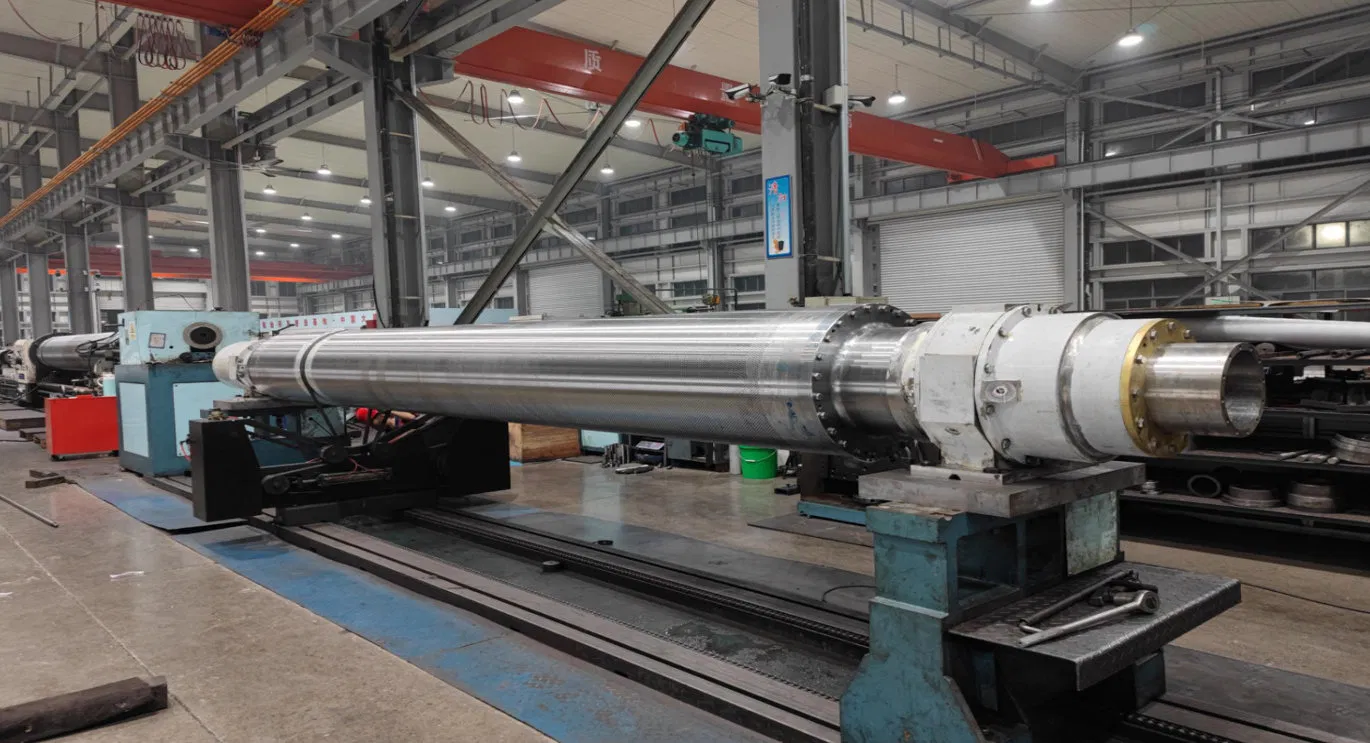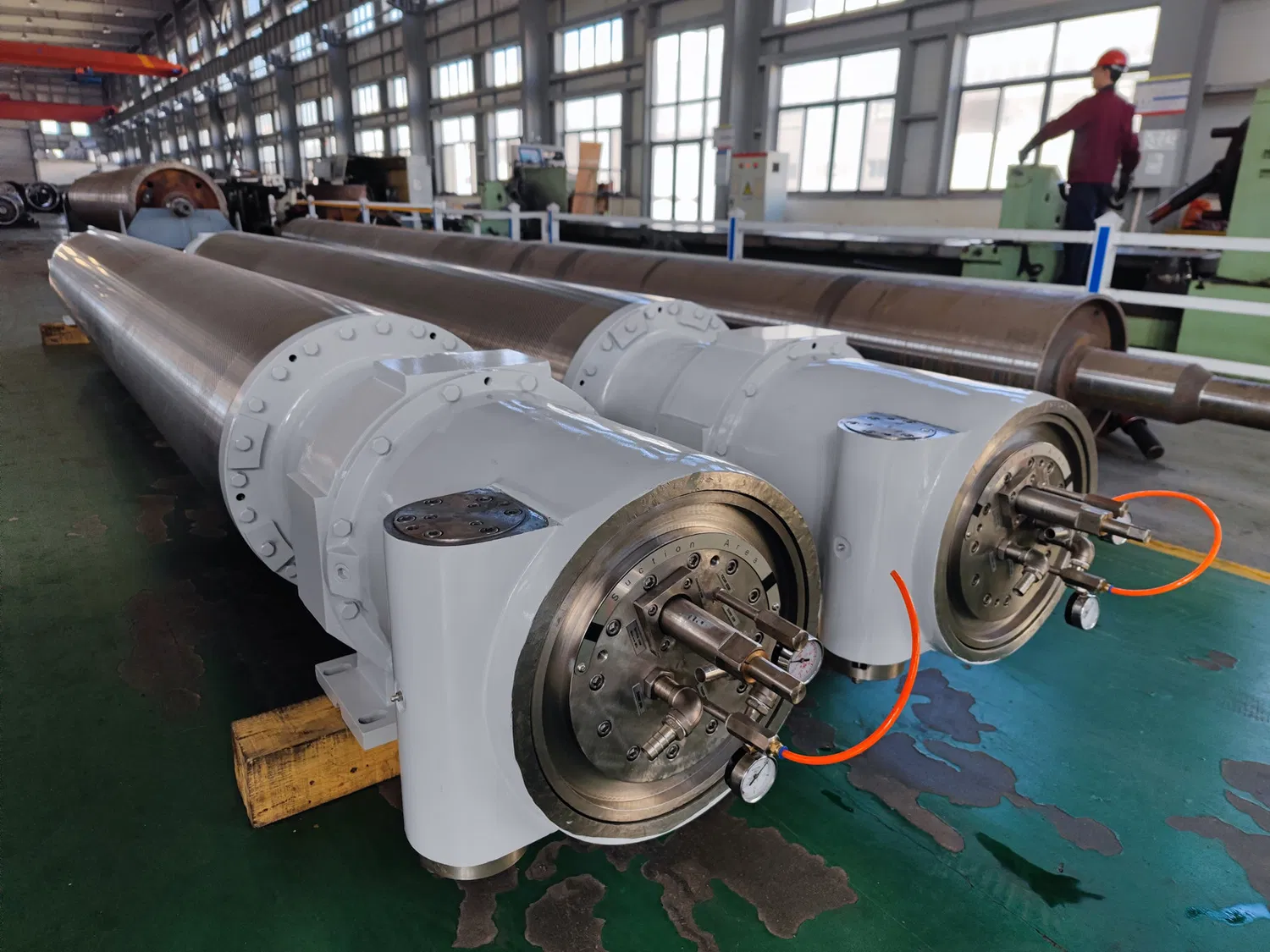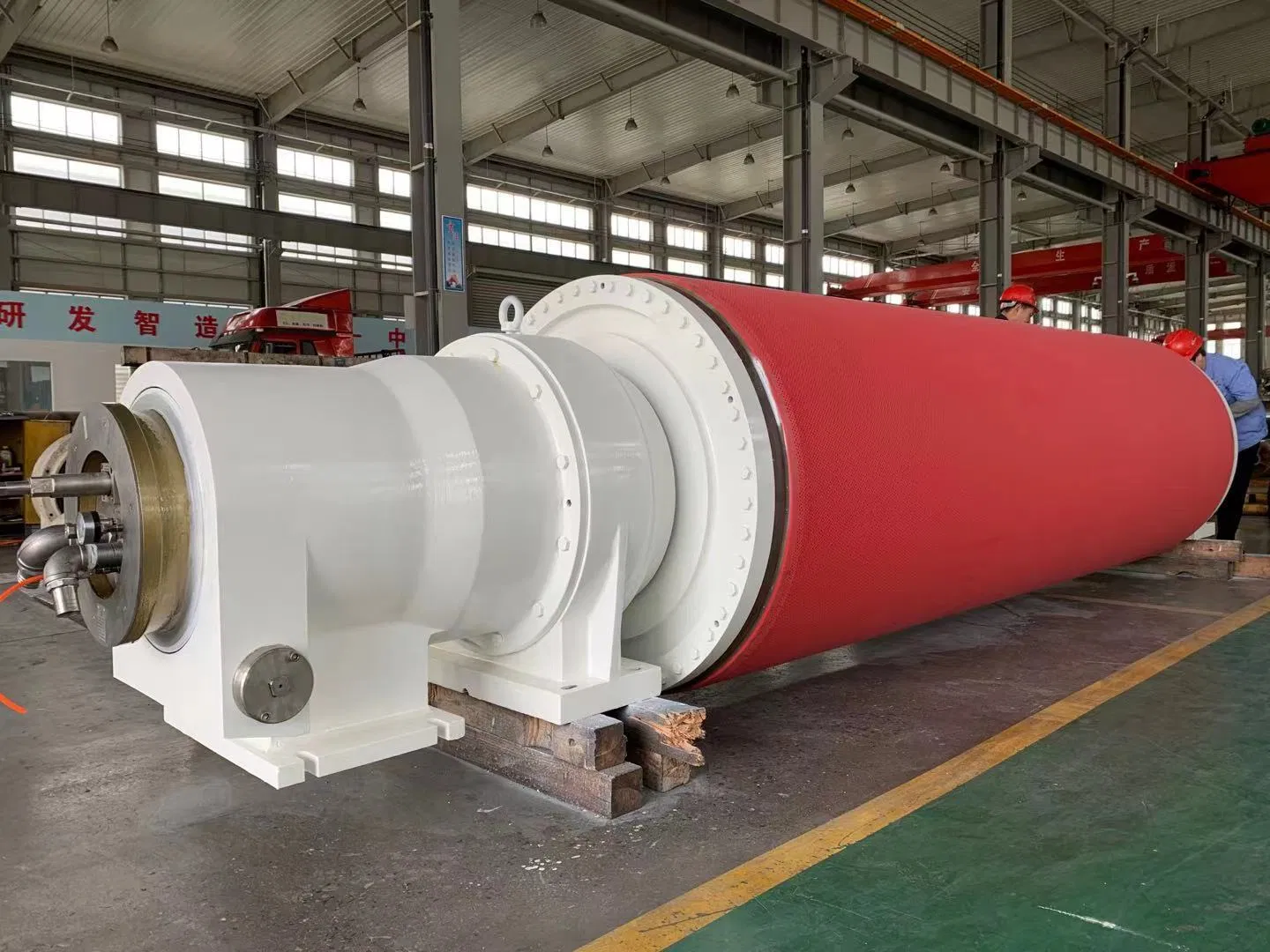The Unsung Heroes: Why Roll Covers Matter in Papermaking
The journey of pulp from a slurry to a finished paper sheet is a marvel of engineering, and rolls are at the heart of this transformation. Each roll, from the forming section to the winder, has a specific function, and its cover is engineered to perform optimally under unique conditions.The Critical Role of Roll Covers
Roll covers are far more than just protective layers; they are active components in the papermaking process. Their primary functions include: * Dewatering: In the forming and press sections, covers facilitate efficient water removal, which is crucial for energy conservation and sheet strength. * Pressing: They provide the necessary nip pressure to consolidate the paper web, enhancing density and surface properties. * Guiding and Tensioning: Covers on guide rolls ensure the web travels smoothly and maintains proper tension throughout the machine. * Surface Finishing: In the calender and coater sections, covers impart specific surface characteristics like smoothness, gloss, and printability. * Protection: They protect the expensive metal roll shell from wear, corrosion, and chemical attack. The properties of a roll cover directly influence the final paper quality, machine runnability, and energy consumption. For instance, a cover with poor release properties can cause sticking, leading to web breaks. Similarly, inadequate wear resistance means frequent regrinding or replacement, increasing maintenance costs and downtime. Many experts agree that optimizing paper machine performance heavily relies on informed roll cover choices.Challenges Faced by Roll Covers
The environment within a paper machine is incredibly harsh. Roll covers must endure: * High Temperatures: Especially in dryer and calender sections. * Extreme Pressures: In the press section, forces can be enormous. * Chemical Exposure: Pulp slurries and process chemicals can be highly corrosive or abrasive. * Abrasion: Constant contact with the paper web, felts, and wires causes wear. * Dynamic Stresses: High speeds and continuous rotation lead to fatigue and heat buildup. Given these challenges, it's worth noting that no single material is perfect for all applications. This is precisely why a detailed paper machine roll cover material comparison is so vital.Diving Deep: A Comprehensive Paper Machine Roll Cover Material Comparison
Let's break down the most common types of roll cover materials, examining their strengths, weaknesses, and typical applications.Rubber-Based Roll Covers: The Traditional Workhorse
For decades, rubber has been the go-to material for many roll covers due to its versatility and cost-effectiveness. However, "rubber" isn't a single material; it encompasses a range of elastomers, each with distinct properties. * Natural Rubber (NR): Known for its excellent elasticity, resilience, and good grip. It offers good shock absorption and is relatively inexpensive. However, it has limited resistance to heat, chemicals, and ozone. * Styrene-Butadiene Rubber (SBR): A synthetic rubber that offers better abrasion resistance and aging properties than natural rubber, with good resilience. It's widely used but still has limitations in high-temperature or aggressive chemical environments. * Ethylene Propylene Diene Monomer (EPDM): Offers excellent resistance to heat, ozone, and many chemicals, including acids and alkalis. It's often chosen for wet end applications where chemical exposure is high. Its mechanical properties, however, might not match other rubbers for specific demanding applications. * Neoprene (Polychloroprene): Provides good resistance to oil, chemicals, and weathering. It's a balanced choice for applications needing moderate resistance to various elements. * Butyl Rubber (IIR): Known for its low gas permeability and excellent resistance to heat, ozone, and polar chemicals. Often used in applications where gas retention or chemical inertness is critical. Pros of Rubber Covers: * Good elasticity and resilience, absorbing shock and maintaining consistent nip pressure. * Excellent grip for web handling. * Relatively easy to regrind and repair. * Lower initial cost for many applications. Cons of Rubber Covers: * Limited resistance to high temperatures and aggressive chemicals. * Can swell or degrade when exposed to certain solvents or oils. * Prone to wear and tear, requiring frequent maintenance. * Lower dynamic stability at very high speeds compared to harder materials. Typical Applications: Press rolls (especially in the early stages), couch rolls, guide rolls, felt rolls, and some size press applications.Polyurethane Roll Covers: The Modern Contender
Polyurethane (PU) has emerged as a superior alternative to rubber in many demanding applications. It offers a broader range of properties through variations in its chemical composition and hardness. Pros of Polyurethane Covers: * Superior Abrasion Resistance: Significantly outlasts rubber in wear-prone applications. * Excellent Chemical Resistance: Withstands a wider array of chemicals, including oils, greases, and many solvents. * Higher Temperature Tolerance: Can operate effectively at higher temperatures than most rubbers. * Good Release Properties: Reduces sticking and allows for cleaner web release. * High Load-Bearing Capacity: Can handle greater pressures without permanent deformation. * Dynamic Stability: Maintains shape and performance at higher machine speeds. * Customizable Hardness: Available in a wide range of Shore hardness values (from very soft to very hard), allowing for precise application matching. Cons of Polyurethane Covers: * Higher initial cost compared to rubber. * Can be less forgiving to sudden impacts or nips with foreign objects. * More challenging to regrind and repair than rubber, often requiring specialized equipment. * Can generate more heat internally at very high speeds due to hysteresis. Typical Applications: Press rolls (especially in demanding positions like blind-drilled or grooved rolls), size press rolls, calender rolls, dryer rolls, coater rolls, and some high-speed guide rolls. Polyurethane is often chosen for optimizing paper machine performance in critical sections.
Composite Roll Covers: Strength Meets Innovation
Composite materials, typically involving a polymer matrix reinforced with fibers like carbon fiber or fiberglass, represent the cutting edge in roll cover technology. These are engineered for extreme performance where traditional materials fall short. Pros of Composite Covers: * Exceptional Stiffness-to-Weight Ratio: Significantly lighter and stiffer than metallic or traditional covered rolls, reducing deflection and improving runnability at high speeds. * Dimensional Stability: Maintain their shape under varying temperatures and pressures, leading to more uniform nip profiles. * Excellent Corrosion Resistance: Impervious to many corrosive chemicals found in the papermaking process. * Reduced Vibration: Their inherent damping properties can minimize machine vibration. * Long Lifespan: Can offer extended operational life due to superior mechanical properties. Cons of Composite Covers: * Very High Initial Cost: Often the most expensive option. * Specialized Manufacturing and Repair: Requires highly specialized processes for fabrication and repair, which can be time-consuming and costly. * Brittle Nature: While strong, they can be more susceptible to catastrophic failure from sharp impacts compared to elastic materials like rubber. * Surface Hardness: The surface layer may still require a wear-resistant coating (e.g., polyurethane or ceramic) for optimal performance. Typical Applications: Large suction rolls, high-speed press rolls where minimal deflection is critical, dryer rolls, and other applications where weight reduction, stiffness, and dimensional stability are paramount. These are key to advanced roll cover technologies.Ceramic and Metallic Coatings: Specialty Solutions
These are typically thin, hard coatings applied to a base roll (often steel or composite) to impart extreme surface properties. * Ceramic Coatings (e.g., Tungsten Carbide, Chromium Oxide): Applied via thermal spray processes. * Pros: Extreme hardness, exceptional wear resistance, excellent corrosion resistance, high thermal stability, good release properties (especially for sticky applications). * Cons: Very high cost, brittle (can chip), can be highly abrasive to felts and wires if not properly maintained, specialized application and repair. * Applications: Calender rolls (especially soft nip calenders), coater rolls, dryer cans, and other applications requiring superior wear and release. * Metallic Coatings (e.g., Hard Chrome): Electroplated. * Pros: Very hard, good wear resistance, smooth surface, relatively good corrosion resistance. * Cons: Can be susceptible to micro-cracking, environmental concerns with chromium plating, can be less wear-resistant than ceramics in extreme conditions. * Applications: Calender rolls, some coater rolls, and guide rolls.
Key Factors in Optimizing Paper Machine Performance Through Roll Cover Selection
Choosing the right roll cover material is not a one-size-fits-all decision. It requires a holistic understanding of the machine, the process, and the desired outcomes. Here are the critical factors to consider in any roll cover selection guide:Operational Environment
* Temperature: Different materials have varying temperature limits. High temperatures can degrade rubber, while some polyurethanes are designed for elevated heat. * pH and Chemical Exposure: The acidity or alkalinity of the pulp slurry, along with the presence of chemicals like sizing agents, dyes, or cleaning solutions, dictates the chemical resistance required. EPDM and certain polyurethanes excel here. * Abrasiveness: The presence of fillers (e.g., clay, titanium dioxide) or recycled fibers can make the web highly abrasive, necessitating materials with superior wear resistance like polyurethanes or ceramics.Roll Position and Function
Each roll position has unique demands: * Forming Section: Requires good dewatering and wear resistance from wires. * Press Section: Needs high load-bearing capacity, good dewatering, and resistance to high pressure and heat. * Dryer Section: Primarily requires high-temperature resistance and good release. * Calender Section: Demands specific surface properties (hardness, smoothness) for finishing. * Coater Section: Needs excellent release, chemical resistance, and specific surface energy.Paper Grade and Quality Requirements
The type of paper being produced (e.g., newsprint, fine paper, board, tissue) significantly influences the choice. For instance, fine paper might require a very smooth, consistent nip for surface quality, while board production might prioritize durability and dewatering.Machine Speed and Load
High-speed machines generate more heat and dynamic stresses, requiring materials with excellent dynamic stability, heat resistance, and low hysteresis. Heavier loads necessitate materials with high compressive strength and creep resistance.Maintenance and Lifespan Considerations
* Regrindability: How easily and frequently can the cover be reground to restore its profile? Rubber is generally easier than polyurethane or composites. * Repairability: Can minor damage be repaired on-site, or does it require a full replacement? * Total Cost of Ownership (TCO): While a material might have a higher initial cost, its extended lifespan, reduced downtime, and improved paper quality can lead to a lower TCO. This is a crucial aspect of any paper machine roll cover material comparison.
The Future of Roll Covers: Innovations and Sustainability
The field of roll cover technology is continuously evolving, driven by the industry's demand for higher speeds, better quality, and increased sustainability.Emerging Materials and Technologies
* Nanocomposites: Incorporating nanoparticles into polymer matrices to enhance properties like wear resistance, thermal conductivity, and stiffness. * Smart Coatings: Covers with embedded sensors for real-time monitoring of temperature, pressure, and wear, enabling predictive maintenance. * Self-Healing Materials: Though still largely in research, materials that can autonomously repair minor damage could revolutionize roll cover lifespan. * Advanced Polymer Blends: Continuous development of new polyurethane and rubber formulations to push the boundaries of performance.Sustainability and Environmental Impact
The industry is increasingly focused on reducing its environmental footprint. This translates to roll covers that are: * More Durable: Longer lifespan means less waste and fewer resources consumed for replacement. * Energy Efficient: Covers that facilitate better dewatering reduce the energy needed for drying. * Recyclable/Reprocessable: Efforts to develop covers that can be recycled or reprocessed at the end of their life cycle. * Reduced Chemical Usage: Covers with superior release properties can minimize the need for release agents or cleaning chemicals.The Role of Data and Advanced Analytics
In my experience, the future of roll cover selection will be heavily influenced by data. Predictive analytics, leveraging sensor data from rolls and machine performance, will help papermakers make even more informed decisions about when to replace or regrind covers, and which materials are truly performing best in their specific conditions. This data-driven approach will further optimize paper machine performance. In conclusion, the selection of paper machine roll cover materials is a complex yet critical aspect of modern papermaking. From the traditional reliability of rubber to the advanced performance of polyurethanes, composites, and ceramic coatings, each material offers a unique set of advantages and disadvantages. A thorough paper machine roll cover material comparison, considering the specific demands of each roll position, operational environment, and desired paper quality, is essential for maximizing efficiency, reducing costs, and ensuring the consistent production of high-quality paper. As technology continues to advance, we can expect even more innovative solutions to emerge, further enhancing the capabilities of these unsung heroes of the paper industry.For more detailed information, please visit our official website:Paper machine roll cover materials
About the author: Dr. Anya Sharma is a materials science expert with over 20 years of experience specializing in industrial coatings and elastomers for heavy machinery. Her work focuses on optimizing performance and durability in challenging environments, particularly within the pulp and paper industry. Dr. Sharma has advised numerous leading paper manufacturers on roll cover selection, maintenance strategies, and the implementation of advanced material technologies to enhance operational efficiency and product quality.


